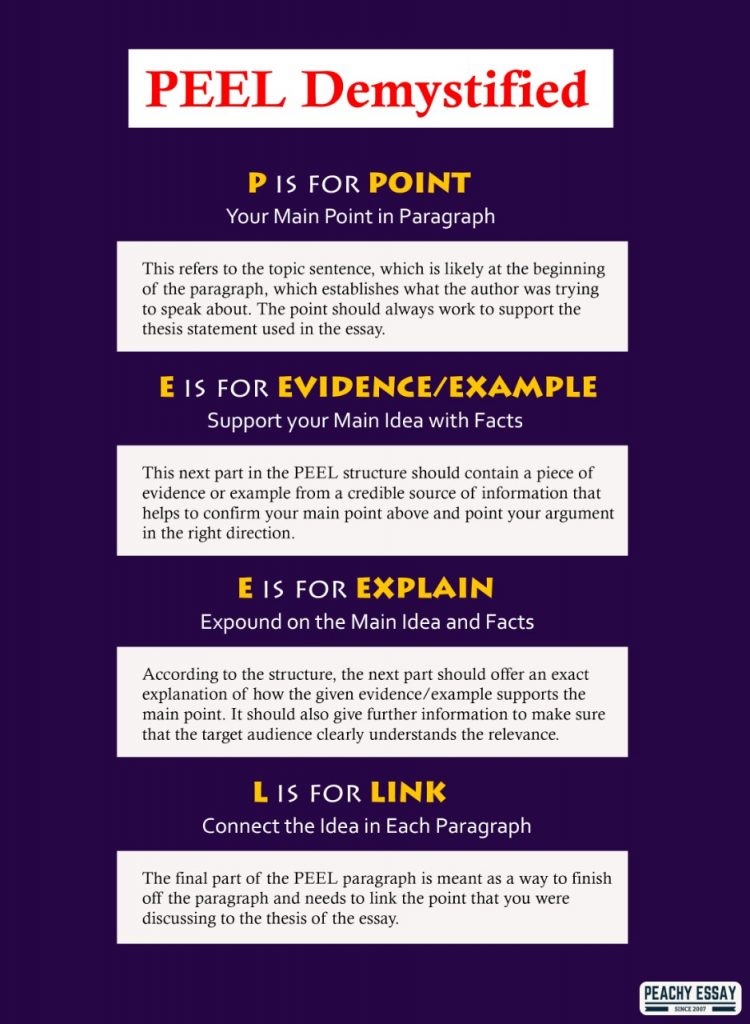

An argumentative essay is an essay that uses evidence and facts to support the claim it’s making. Its purpose is to persuade the reader to agree with the argument being made. The main idea behind an argumentative essay is to prove an opinion right or wrong based on evidence collected by and analyzed by the writer. The student must research and investigate a topic and generate arguments against or for this opinion and establish a clear cut position that does not waiver or change throughout. Simply put, you must prove your side to your reader.
A good argumentative essay will use facts and evidence to support the argument, rather than just the author’s thoughts and opinions.


Thesis-a brief opening line ( or two) establishing the key element to be covered in the paragraph.
Development-an elaboration of your principal thesis. The meaning of your thesis, the areas it touches upon and so forth.
• It should flow naturally from the thesis.
• It can offer mini-analyses as you wrestle with the implications of what you're saying.
Evidence-the most important part of each paragraph. All theses and points raised in your development should be supported by evidence. This could take the shape of:
• quotes from secondary sources
• examples from real-life situations (news, articles, events and so forth)
• examples and/or events from personal experience (the knower's perspective)
• facts and data (such as statistical information and measurements)
• illustrations and diagrams (both primary and secondary in nature).
Balance-attempts should be made in either the existing paragraph
or in a completely new one to offer alternative perspectives to the
key thesis under consideration.
Analysis-at the end of each paragraph there should be a line (or two) linking the information back to the overall research question.
• Students should be able to answer the following question in each paragraph:
What insight does this paragraph offer to the overall question?
• It could also suggest any contradictions/unresolved issues.






The main body of your essay should present a clear and logical response to the question. You should use focussed and connected paragraphs to further your argument.
You should discuss and evidence a few key points in detail, rather than include lots of points that are dealt with in a superficial way.
This short video, The Power of the Paragraph, gives a basic explanation of how to structure a paragraph.







